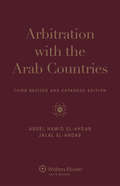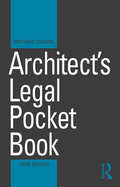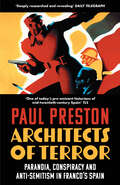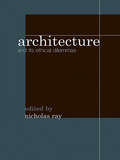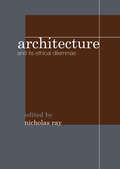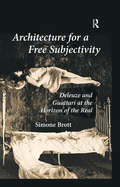- Table View
- List View
Arbitration Under International Investment Agreements: A Guide to the Key Issues
Investor-state arbitration is a form of dispute settlement that allows foreign investors the opportunity to seek compensation for damages or discriminatory practices, most of which arise out of breaches of treaty obligations by the governments of host countries. With a high level of public interest involved in these cases, the awards of these tribunals are subject to much scrutiny and debate. As a result, up-to-date knowledge of the key topics of investment arbitration is integral for those practicing in the field, especially given the rapid development of international investment law. Arbitration Under International Investment Agreements: A Guide to the Key Issues describes the most important procedural and substantive aspects of investment arbitration in a practical and accessible manner. Covering all procedural stages of investor-state arbitration, the text provides a broad overview of the key topics including the role of precedent, counterclaims, third party funding, bi-trifurcation, burden of proof regarding jurisdiction, attribution, breach of treaty and contract claims, fair and equitable treatment, indirect expropriation, and culminates in the enforcement of investment awards. The text also describes the conflicts and challenges facing arbitrators from a practical perspective, providing a comprehensive insight into investor-state arbitration. With contributions from many of the leading experts in the field, private practitioners, academics, government and intergovernmental organization officials, this text addresses all issues in an objective manner. Through pragmatic and reliable analysis, this book provides the reader with an authoritative understanding of all aspects of this evolving topic. "When the first edition of this text was published a short seven years ago, it quickly became an authoritative reference guide for practitioners, academics, and tribunals on investor-state questions... As attested by the breadth and depth of the topics in this edition, investment treaties and arbitration continue to raise novel legal questions. The editor is an expert in the field, having dealt with investment law and procedure from the distinct perspectives of an international organization, an arbitral institution, a law firm representing both states and investors in individual cases, and as a professor of law. Her knowledge and expertise is evident throughout. In addition, the contributing authors are all well known in this discipline, with backgrounds and knowledge that bring an intelligent and up-to-date perspective on the most important questions in the field. Given this combination, it is certain that this edition will become equally authoritative as the first edition..." —Meg Kinnear, ICSID Secretary General
Arbitration: A Very Short Introduction (Very Short Introductions)
by Thomas Schultz Thomas GrantVery Short Introductions: Brilliant, Sharp, Inspiring Arbitration is a legal dispute resolution mechanism, alternative to courts. It provides binding decisions, enforceable around the world. It is where parties take their disputes when they have agreed that courts, for one reason or another, do not suit them - which happens more often than one might think. Some of the most politically sensitive disputes on the largest scale go to arbitration. Countries which need to settle their boundaries in areas of the oceans rich in oil, gas and other resources sometimes arbitrate, and much of the war in Sudan was eventually tied up with an arbitration. Investors who have staked billions of dollars in unstable developing countries rely on arbitration clauses to protect their investments. But also much smaller, everyday cases are routinely dealt with by arbitration - millions of consumers, whether they know it or not, enter into arbitration contracts when they conclude routine transactions. Even athletes get involved in arbitration cases of great notoriety, for instance when these relate to doping offences during the Olympic Games. This Very Short Introduction explains what arbitration is, how it works, what parties who have agreed to go to arbitration should expect, the relationship between arbitration and the law, and the politics of arbitration. It also considers where the global system of arbitration is headed. ABOUT THE SERIES: The Very Short Introductions series from Oxford University Press contains hundreds of titles in almost every subject area. These pocket-sized books are the perfect way to get ahead in a new subject quickly. Our expert authors combine facts, analysis, perspective, new ideas, and enthusiasm to make interesting and challenging topics highly readable.
Arbitration: A Very Short Introduction (Very Short Introductions)
by Thomas Schultz Thomas GrantVery Short Introductions: Brilliant, Sharp, Inspiring Arbitration is a legal dispute resolution mechanism, alternative to courts. It provides binding decisions, enforceable around the world. It is where parties take their disputes when they have agreed that courts, for one reason or another, do not suit them - which happens more often than one might think. Some of the most politically sensitive disputes on the largest scale go to arbitration. Countries which need to settle their boundaries in areas of the oceans rich in oil, gas and other resources sometimes arbitrate, and much of the war in Sudan was eventually tied up with an arbitration. Investors who have staked billions of dollars in unstable developing countries rely on arbitration clauses to protect their investments. But also much smaller, everyday cases are routinely dealt with by arbitration - millions of consumers, whether they know it or not, enter into arbitration contracts when they conclude routine transactions. Even athletes get involved in arbitration cases of great notoriety, for instance when these relate to doping offences during the Olympic Games. This Very Short Introduction explains what arbitration is, how it works, what parties who have agreed to go to arbitration should expect, the relationship between arbitration and the law, and the politics of arbitration. It also considers where the global system of arbitration is headed. ABOUT THE SERIES: The Very Short Introductions series from Oxford University Press contains hundreds of titles in almost every subject area. These pocket-sized books are the perfect way to get ahead in a new subject quickly. Our expert authors combine facts, analysis, perspective, new ideas, and enthusiasm to make interesting and challenging topics highly readable.
Arbitration with the Arab Countries
by Abdel Hamid El-Ahdab & Jalal El-AhdabThis book is intended to provide lawyers and businesses with an overview of the legal systems and processes in relation to arbitration in all the Arab jurisdictions in the Middle East and North Africa: Algeria, Bahrain, Egypt, Iraq, Jordan, Kuwait, Lebanon, Libya, Morocco, Oman, Qatar, Saudi Arabia, Sudan, Syria, Tunisia, United Arab Emirates, Yemen, In addition, there will be a chapter on Muslim arbitration law (Shari’a), the Amman Arab Convention on Commercial Arbitration (1987) and the Riyad Arab Convention on Judicial Cooperation (1983). The new edition will be completely revised, updated, and expanded, providing commentary, an overview of case law, and translations of the relevant statutes. Each chapter will follow the same outline to ensure that they are as consistent and comparative as possible and will cover (but not be limited to) issues such as: the legal and judicial system, the agreement to arbitrate, the arbitrators, the proceedings, arbitral awards, the enforcement of the award, and the means of recourse.
Arbitration’s Age of Enlightenment? (ICCA Congress Series #21)
Directly presenting the considered views of a broad cross-section of the international arbitration community, this timely collection of essays addresses the criticism of the arbitral process that has been voiced in recent years, interpreting the challenge as an invitation to enlightenment. The volume records the entire proceedings of the twenty-fifth Congress of the International Council for Commercial Arbitration (ICCA), held in Edinburgh in September 2022. Topics range from the impact of artificial intelligence to the role of international arbitration in restraining resort to unilateralism, protectionism, and nationalism. The contributors tackle such contentious issues as the following: time and cost; gender and cultural diversity; confidentiality vs. transparency; investor-State dispute settlement procedures; the proposed establishment of a permanent international investment court system; how cross-fertilisation across different disciplines may impact international arbitration; determining whether a document request seeks documents that are relevant and material to the outcome of a dispute; whether we would be better off if investment arbitration were to disappear; and implications for international arbitration of the Russian invasion of Ukraine. There is consideration of global issues that are likely to give rise to disputes in the future, including climate change, environmental protection, access to depleting water resources, energy and mining transition, and human rights initiatives. Several contributions focus on developments in specific countries (China, India) and regions (Africa, the Middle East). Arbitrators, corporate counsel, and policymakers will appreciate this opportunity to engage with current thinking on key issues in international commercial and investment arbitration, especially given the diversity of thought presented by authors from all over the world.
Arbitrators as Lawmakers (International Arbitration Law Library Series Set)
by Dolores BentolilaThis book analyses how arbitrators make rules that guide, constrain, and define the process and substance of international arbitration. Providing a thorough and multidisciplinary analysis of the actors, process, and outcome of arbitral lawmaking, the study shows how arbitrators create principles of law through consistent arbitral decision-making and through interacting with other members of the arbitral community. This book investigates and responds to the following questions: - What is the relationship between international arbitration and the law and courts of the seat? - What is the role of international tribunals in assisting and controlling investment arbitration? - What is the scope of arbitrators’ freedom in decision-making? - What constraints limit arbitrators’ decision-making and contribute to consistency? - Is international arbitration capable of paying deference to past arbitral decisions? - Which rules have arbitrators created in procedural and substantive matters? - What is the role and status of consistent arbitral decisions? - Is there an arbitral legal system? The answers to these questions are drawn from actual arbitral decisions made available to the public, clarifying important issues about jurisdiction, procedure, applicable law, interpretation of substantive rules and instruments, and remedies. This is the first overarching study of whether and to what extent international commercial, and investment arbitrators create norms and even generate a legal system. As such, it will be of immeasurable and lasting value to arbitrators, practitioners, scholars, arbitral institutions, and international organizations worldwide, for all of whom it will not only clarify our understanding of arbitral decision-making and arbitrator-made rules, but also foster transparency and accountability in arbitral decision-making
The Arc of Due Process in American Constitutional Law
by E. Thomas Sullivan Toni M. MassaroTopics such as military tribunals, same-sex marriage, informative privacy, reproductive rights, affirmative action, and states' rights fill the landscape of contemporary legal debate and media discussion, and they all fall under the umbrella of the Due Process Clauses of the United States Constitution. However, what is not always fully understood is the constitutional basis of these rights, or the exact list of due process rights as they have evolved over time through judicial interpretation. In The Arc of Due Process in American Constitutional Law, Sullivan and Massaro describe the intricate history of what are currently considered due process rights, and maintain that modern constitutional theory and practice must adhere to it. The authors focus on the origins and contemporary uses of due process principles in American constitutional law, while offering an overarching description of the factors or normative concepts that allow courts to invalidate a government action on the grounds of due process. They also analyze judicial interpretations and expressions as a key manner and perhaps the most powerful source of how due process has taken form in the United States. In the process of charting this arc, the authors describe the judicial analysis of rights within each category applying an illustrative list, and identify several fundamental norms that span these disparate threads of due process and the most salient principles that animate due process doctrine.
The Arc of Protection: Reforming the International Refugee Regime
by T. Alexander Aleinikoff Leah ZamoreThe international refugee regime is fundamentally broken. Designed in the wake of World War II to provide protection and assistance, the system is unable to address the record numbers of persons displaced by conflict and violence today. States have put up fences and adopted policies to deny, deter, and detain asylum seekers. People recognized as refugees are routinely denied rights guaranteed by international law. The results are dismal for the millions of refugees around the world who are left with slender prospects to rebuild their lives or contribute to host communities. T. Alexander Aleinikoff and Leah Zamore lay bare the underlying global crisis of responsibility. The Arc of Protection adopts a revisionist and critical perspective that examines the original premises of the international refugee regime. Aleinikoff and Zamore identify compromises at the founding of the system that attempted to balance humanitarian ideals and sovereign control of their borders by states. This book offers a way out of the current international morass through refocusing on responsibility-sharing, seeing the humanitarian-development divide in a new light, and putting refugee rights front and center.
Archaeologies of Rules and Regulation: Between Text and Practice
by Barbara Hausmair, Ben Jervis, Ruth Nugent and Eleanor WilliamsHow can we study the impact of rules on the lives of past people using archaeological evidence? To answer this question, Archaeologies of Rules and Regulation presents case studies drawn from across Europe and the United States. Covering areas as diverse as the use of space in a nineteenth-century U.S. Army camp, the deposition of waste in medieval towns, the experiences of Swedish migrants to North America, the relationship between people and animals in Anglo-Saxon England, these case studies explore the use of archaeological evidence in understanding the relationship between rules, lived experience, and social identity.
Archaeology and Heritage of the Human Movement into Space (Space and Society)
by Beth Laura O’Leary P. J. CapelottiThis volume addresses the creation, documentation, preservation, and study of the archaeology of lunar, planetary, and interstellar exploration. It defines the attributes of common human technological expressions within national and, increasingly, private exploration efforts, and explore the archaeology of both fixed and mobile artifacts in the solar system and the wider galaxy.This book presents the research of the foremost scholars in the field of space archaeology and heritage, a recent discipline of the field of Space Archaeology and Heritage. It provides the emerging archaeological perspective on the history of the human exploration of space. Since humans have been creating a vast archaeological preserve in space and on other celestial bodies. This assemblage of heritage objects and sites attest to the human presence off the Earth and the study of these material remains are best investigated by archaeologists and historic preservationists. As space exploration has reached the half century mark, it is the appropriate time to reflect on the major events and technological development of this particular unique 20th century arena of human history.The authors encapsulate various ways of looking at the archaeology of both fixed and mobile human artifacts in the solar system. As missions continue into space, and as private ventures gear up for public and tourist visits to space and to the Moon and even Mars, it is the appropriate time to address questions about the meaning and significance of this material culture.
Architecting User-Centric Privacy-as-a-Set-of-Services: Digital Identity-Related Privacy Framework (Springer Theses)
by Ghazi Ben AyedHow could privacy play a key role in protecting digital identities? How could we merge privacy law, policies, regulations and technologies to protect our digital identities in the context of connected devices and distributed systems? In this book, the author addresses major issues of identity protection and proposes a service-oriented layered framework to achieve interoperability of privacy and secure distributed systems. The framework is intended to distill privacy-related digital identity requirements (business interoperability) into a set of services, which in turn can be implemented on the basis of open standards (technical interoperability). The adoption of the proposed framework in security projects and initiatives would decrease complexities and foster understanding and collaborations between business and technical stakeholders. This work is a step toward implementing the author’s vision of delivering cyber security as a set of autonomous multi-platform hosted services that should be available upon user request and on a pay-per-use basis.
Architect's Legal Handbook: The Law for Architects
by Anthony Speaight Gregory StoneArchitect's Legal Handbook: The Law for Architects, Fifth Edition is a collection of papers including those on International Work by Architects, on European community Law affecting Architects, and the Architects' Professional Indemnity Insurance. This collection is a comprehensive guideline to laws in England, Scotland, and the European community. This handbook seeks to make architects more aware of where possible legal pitfalls may lurk. Coverage is updated to include changes in English Law, Scottish Law, English Law of Contract, the Law of Tort, Architect's Appointment and Collateral Warranties, Architects' Liability, English and Scottish Land Laws, and the Standard Building Contracts in England. The origins and sources of the laws and the basic principles are explained, which guide the reader into how these are applied in the architects' relations with their clients and clients; contractors. A wider discussion is given on the topic of collateral warranties, incorporation options, and legal organizations such as partnerships and limited companies. Upon the formation of the European Community, institutions and treatises have arisen, so a review of technical harmonization and standards, right of establishment and freedom to provide services, product liability, and consumer protection is provided in order. The international workplace for British architects is also discussed, covering most countries in Europe. This collection of papers will prove useful for architects and engineers, especially those who want to put up their own architectural firms. The book can be likewise an informative source for architectural students, lawyers, and professors in business and commercial law.
Architect's Legal Pocket Book (Routledge Pocket Books)
by Matthew CousinsA little book that’s big on information, the Architect’s Legal Pocket Book is the definitive reference guide on legal issues for architects and architectural students. This handy pocket guide covers key legal principles which will help you to quickly understand the law and where to go for further information. Now in its third edition, this bestselling book has been fully updated throughout to provide you with the most current information available. Subjects include contract administration, building legislation, planning, listed buildings, contract law, negligence, liability and dispute resolution. This edition also contains new cases and legislation, contracts including the RIBA contract administration certificates, inspection duties, practical completion, the Hackitt review, the Report of the Independent Inquiry into the Construction of Edinburgh Schools and practical issues facing architects. Illustrated with clear diagrams and featuring key cases, this is a comprehensive guide to current law for architects and an invaluable source of information. It is a book no architect should be without.
Architect's Legal Pocket Book (Routledge Pocket Books)
by Matthew CousinsA little book that’s big on information, the Architect’s Legal Pocket Book is the definitive reference guide on legal issues for architects and architectural students. This handy pocket guide covers key legal principles which will help you to quickly understand the law and where to go for further information. Now in its third edition, this bestselling book has been fully updated throughout to provide you with the most current information available. Subjects include contract administration, building legislation, planning, listed buildings, contract law, negligence, liability and dispute resolution. This edition also contains new cases and legislation, contracts including the RIBA contract administration certificates, inspection duties, practical completion, the Hackitt review, the Report of the Independent Inquiry into the Construction of Edinburgh Schools and practical issues facing architects. Illustrated with clear diagrams and featuring key cases, this is a comprehensive guide to current law for architects and an invaluable source of information. It is a book no architect should be without.
Architects of Terror: Paranoia, Conspiracy And Anti-semitism In Franco's Spain
by Paul PrestonA TIMES HISTORY BOOK OF THE YEAR From the preeminent historian of 20th century Spain Paul Preston, Architects of Terror is a new history of how paranoia, conspiracy and anti-Semitism was used to justify the military coup of 1936 and enabled the construction of a dictatorship built on violence and persecution.
Architectural Projects of Marco Frascari: The Pleasure of a Demonstration (Ashgate Studies in Architecture)
by Sam RidgwayMarco Frascari believed that architects should design thoughtful buildings capable of inspiring their inhabitants to have pleasurable and happy lives. A visionary Italian architect, academic and theorist, Frascari is best-known for his extraordinary texts, which explore the intellectual, theoretical and practical substance of the architectural discipline. As a student in Venice during the late 1960s, Frascari was taught and mentored by Carlo Scarpa. Later he moved to North America with his family, where he became a fulltime academic. Throughout his academic career, he continued to work on numerous architectural projects, including exhibitions, competition entries, and designs for approximately 35 buildings, a small number of which were built. As a means of (re)constructing the theatre of imaginative theory within which these buildings were created, Sam Ridgway draws on a wide selection of Frascari’s texts, including his richly poetic book Monsters of Architecture, to explore the themes of representation, demonstration, and anthropomorphism. Three of Frascari’s delightful buildings are then brought to light and interpreted, revealing a sophisticated and interwoven relationship between texts and buildings.
Architectural Projects of Marco Frascari: The Pleasure of a Demonstration (Ashgate Studies in Architecture)
by Sam RidgwayMarco Frascari believed that architects should design thoughtful buildings capable of inspiring their inhabitants to have pleasurable and happy lives. A visionary Italian architect, academic and theorist, Frascari is best-known for his extraordinary texts, which explore the intellectual, theoretical and practical substance of the architectural discipline. As a student in Venice during the late 1960s, Frascari was taught and mentored by Carlo Scarpa. Later he moved to North America with his family, where he became a fulltime academic. Throughout his academic career, he continued to work on numerous architectural projects, including exhibitions, competition entries, and designs for approximately 35 buildings, a small number of which were built. As a means of (re)constructing the theatre of imaginative theory within which these buildings were created, Sam Ridgway draws on a wide selection of Frascari’s texts, including his richly poetic book Monsters of Architecture, to explore the themes of representation, demonstration, and anthropomorphism. Three of Frascari’s delightful buildings are then brought to light and interpreted, revealing a sophisticated and interwoven relationship between texts and buildings.
Architecture and its Ethical Dilemmas
by Nicholas RayA cast of leading writers and practitioners tackle the ethical questions that architects are increasingly facing in their work, from practical considerations in construction to the wider social context of buildings, their appearance, use and place in the narrative of the environment. This book gives an account of these ethical questions from the perspectives of historical architectural practice, philosophy, and business, and examines the implications of such dilemmas. Taking the current discussion of ethics in architecture on to a new stage, this volume provides an accumulation of diverse opinions, focusing on architects' actions and products that materially affect the lives of people in all urbanized societies.
Architecture and its Ethical Dilemmas
by Nicholas RayA cast of leading writers and practitioners tackle the ethical questions that architects are increasingly facing in their work, from practical considerations in construction to the wider social context of buildings, their appearance, use and place in the narrative of the environment. This book gives an account of these ethical questions from the perspectives of historical architectural practice, philosophy, and business, and examines the implications of such dilemmas. Taking the current discussion of ethics in architecture on to a new stage, this volume provides an accumulation of diverse opinions, focusing on architects' actions and products that materially affect the lives of people in all urbanized societies.
Architecture for a Free Subjectivity: Deleuze and Guattari at the Horizon of the Real
by Simone BrottArchitecture for a Free Subjectivity reformulates the French philosopher Gilles Deleuze's model of subjectivity for architecture, by surveying the prolific effects of architectural encounter, and the spaces that figure in them. For Deleuze and his Lacanian collaborator Félix Guattari, subjectivity does not refer to a person, but to the potential for and event of matter becoming subject, and the myriad ways for this to take place. By extension, this book theorizes architecture as a self-actuating or creative agency for the liberation of purely "impersonal effects." Imagine a chemical reaction, a riot in the banlieues, indeed a walk through a city. Simone Brott declares that the architectural object does not merely take part in the production of subjectivity, but that it constitutes its own. This book is to date the only attempt to develop Deleuze's philosophy of subjectivity in singularly architectural terms. Through a screening of modern and postmodern, American and European works, this provocative volume draws the reader into a close encounter with architectural interiors, film scenes, and other arrangements, while interrogating the discourses of subjectivity surrounding them, and the evacuation of the subject in the contemporary discussion. The impersonal effects of architecture radically changes the methodology, just as it reimagines architectural subjectivity for the twenty-first century.
Architecture for a Free Subjectivity: Deleuze and Guattari at the Horizon of the Real
by Simone BrottArchitecture for a Free Subjectivity reformulates the French philosopher Gilles Deleuze's model of subjectivity for architecture, by surveying the prolific effects of architectural encounter, and the spaces that figure in them. For Deleuze and his Lacanian collaborator Félix Guattari, subjectivity does not refer to a person, but to the potential for and event of matter becoming subject, and the myriad ways for this to take place. By extension, this book theorizes architecture as a self-actuating or creative agency for the liberation of purely "impersonal effects." Imagine a chemical reaction, a riot in the banlieues, indeed a walk through a city. Simone Brott declares that the architectural object does not merely take part in the production of subjectivity, but that it constitutes its own. This book is to date the only attempt to develop Deleuze's philosophy of subjectivity in singularly architectural terms. Through a screening of modern and postmodern, American and European works, this provocative volume draws the reader into a close encounter with architectural interiors, film scenes, and other arrangements, while interrogating the discourses of subjectivity surrounding them, and the evacuation of the subject in the contemporary discussion. The impersonal effects of architecture radically changes the methodology, just as it reimagines architectural subjectivity for the twenty-first century.
The Architecture of Constitutional Amendments: History, Law, Politics
by Richard AlbertThis innovative book blends constitutional theory with real-life political practice to explore the impact of codifying constitutional amendments on the operation of the constitution in relation to democracy, the rule of law, and the separation of powers. It draws from comparative, historical, political and theoretical perspectives to answer questions all constitutional designers should ask themselves:- Should the constitution append amendments sequentially to the end of the text?- Should it embed amendments directly into the existing text, with notations about what has been modified and how? - Should it instead insert amendments into the text without indicating at all that any alteration has occurred? The book examines the 3 major models of amendment codification – the appendative, the integrative, and the invisible models – and also shows how some jurisdictions have innovated alternative forms of amendment codification that combine elements of more than 1 model in a unique hybridisation driven by history, law, and politics.Constitutional designers rarely consider where in the constitution to codify amendments once they are ratified. Yet this choice is pivotal to the operation of any constitution. This groundbreaking book shows why the placement of constitutional amendments goes well beyond mere aesthetics. It influences how and whether a people remembers its past, how the constitutional text will be interpreted and by whom, and whether the constitution will be easily accessible to the governed.A global tour of the high stakes of constitution-making, this book features 18 diverse and outstanding scholars from around the world – across Africa, America, Asia and Oceania, and Europe – raising new questions, opening our eyes to new streams of research, and uncovering new possibilities for constitutional design.
The Architecture of Constitutional Amendments: History, Law, Politics
This innovative book blends constitutional theory with real-life political practice to explore the impact of codifying constitutional amendments on the operation of the constitution in relation to democracy, the rule of law, and the separation of powers. It draws from comparative, historical, political and theoretical perspectives to answer questions all constitutional designers should ask themselves:- Should the constitution append amendments sequentially to the end of the text?- Should it embed amendments directly into the existing text, with notations about what has been modified and how? - Should it instead insert amendments into the text without indicating at all that any alteration has occurred? The book examines the 3 major models of amendment codification – the appendative, the integrative, and the invisible models – and also shows how some jurisdictions have innovated alternative forms of amendment codification that combine elements of more than 1 model in a unique hybridisation driven by history, law, and politics.Constitutional designers rarely consider where in the constitution to codify amendments once they are ratified. Yet this choice is pivotal to the operation of any constitution. This groundbreaking book shows why the placement of constitutional amendments goes well beyond mere aesthetics. It influences how and whether a people remembers its past, how the constitutional text will be interpreted and by whom, and whether the constitution will be easily accessible to the governed.A global tour of the high stakes of constitution-making, this book features 18 diverse and outstanding scholars from around the world – across Africa, America, Asia and Oceania, and Europe – raising new questions, opening our eyes to new streams of research, and uncovering new possibilities for constitutional design.
The Architecture of Fundamental Rights in the European Union (Modern Studies in European Law)
by Šejla ImamovicThis book analyses the new architecture for the protection of fundamental rights in Europe after the entry into force of the Lisbon Treaty. As a starting point, it identifies how the EU has gained a prominent role in promoting and protecting fundamental rights at European level despite the absence of an unlimited mandate to address fundamental rights violations. This new setting affects the traditional relationship between the EU, the ECHR system and the Member States and, in the absence of EU accession to the ECHR, enhances the risk of tensions and conflicts between the case law of the two European Courts. Examples of these tensions and conflicts are explored in the Area of Freedom Security and Justice, which is one of the most fundamental rights-sensitive areas of EU law and one of the busiest areas of activity for the CJEU. The book offers new insights into existing rules on the resolution of conflicts between EU and ECHR law before mapping out techniques actually used by domestic courts to avoid or address such conflicts.
The Architecture of Fundamental Rights in the European Union (Modern Studies in European Law)
by Šejla ImamovicThis book analyses the new architecture for the protection of fundamental rights in Europe after the entry into force of the Lisbon Treaty. As a starting point, it identifies how the EU has gained a prominent role in promoting and protecting fundamental rights at European level despite the absence of an unlimited mandate to address fundamental rights violations. This new setting affects the traditional relationship between the EU, the ECHR system and the Member States and, in the absence of EU accession to the ECHR, enhances the risk of tensions and conflicts between the case law of the two European Courts. Examples of these tensions and conflicts are explored in the Area of Freedom Security and Justice, which is one of the most fundamental rights-sensitive areas of EU law and one of the busiest areas of activity for the CJEU. The book offers new insights into existing rules on the resolution of conflicts between EU and ECHR law before mapping out techniques actually used by domestic courts to avoid or address such conflicts.


